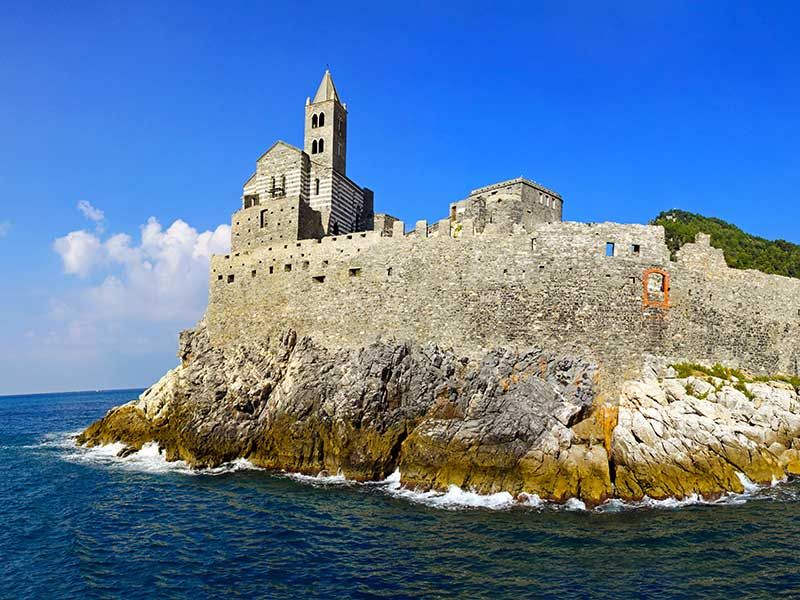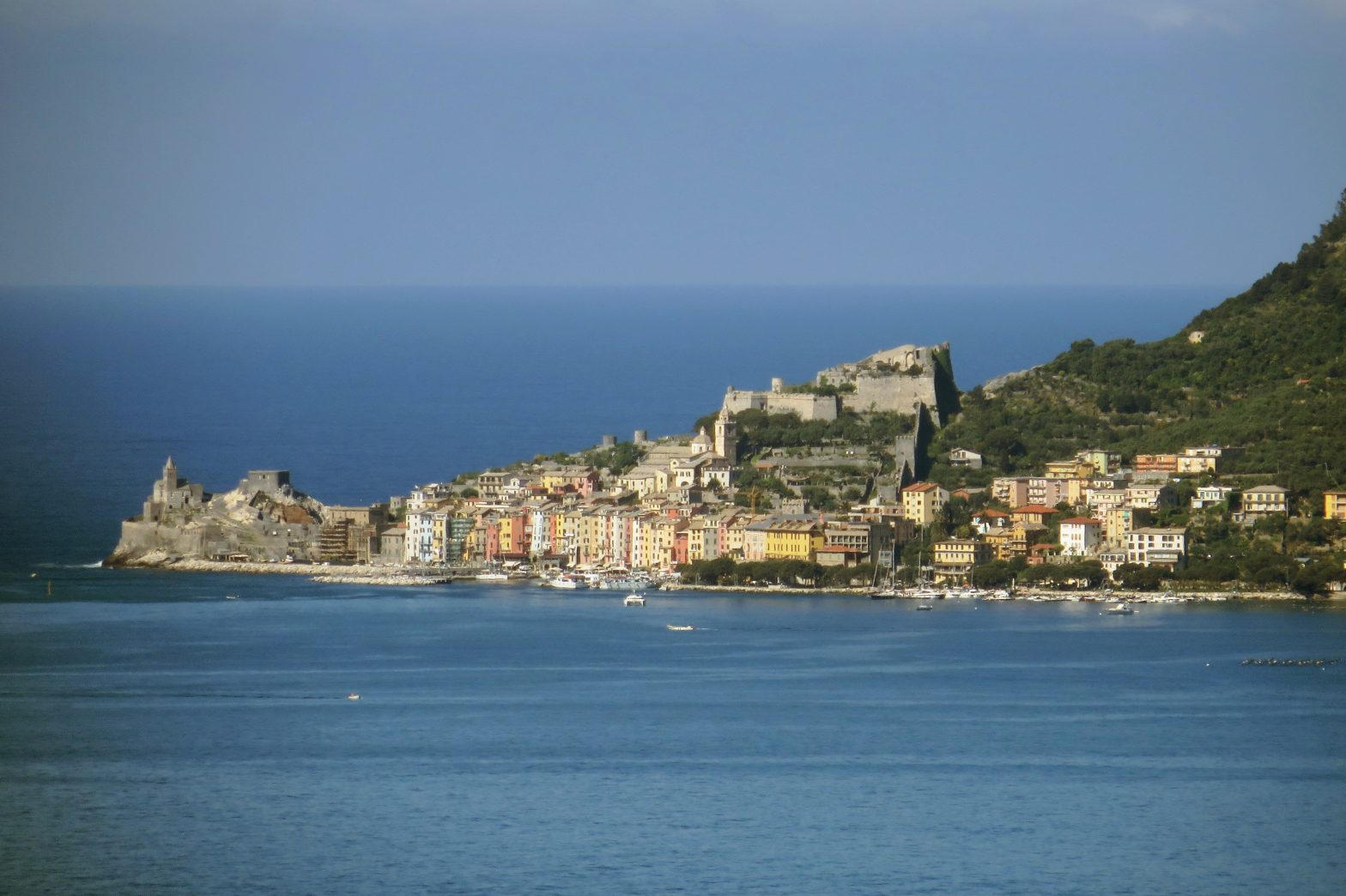P orto Venere, Liguria, Italy comprises the three villages of Fezzano, Le Grazie and Porto Venere, and the three islands of Palmaria, Tino and Tinetto. In 1997 Porto Venere and the villages of Cinque Terre were designated by UNESCO as a World Heritage Site. If Cinque Terre were ever to pick up an honorary sixth member, Porto Venere would surely be it. The colorful facades and pedestrians-only calata (promenade) make Portovenere the quintessential Ligurian seaside village, much or less like Cinque Terre.
The ancient Portus Veneris is believed to date back to at least the middle of the 1st century BC. It has been said that the name refers to a temple to the goddess Venus which was sited on the promontory where the church of Peter the Apostle now stands. The name has also been linked to that of the hermit Saint Venerius. In Roman times the city was essentially a fishing community.

Main sights
The Grotta dell’Arpaia (now collapsed), known as Byron’s Grotto, from which the English poet Byron swam across the gulf of La Spezia to San Terenzo to visit Shelley in Lerici, in 1822.
The Gothic Church of St. Peter, consecrated in 1198. It was built over a pre-existing 5th century Palaeo-Christian church, which had rectangular plan and semicircular apse. The new part, from the 13th century, is marked externally by white and black stripes.
The Romanesque church of St. Lawrence, erected in 1098 by the Genoese. It probably occupies the site of ancient temple dedicated to Jupiter. The church was damaged by a fire in 1340 and by the Aragonese attack in 1494, and was further restored in 1582.
The Doria Castle with the walls around the historic center. (Doria is the name of an old and extremely wealthy Genoese family who played a major role in the history of the Republic of Genoa and in Italy, from the 12th century to the 16th century.)
Portovenere’s Medieval Center: One enters the medieval village through its old city gate with a Latin inscription from 1113 above it. To the left of the gate are Genoese measures of capacity dating from 1606. Via Capellini, the narrrow main street, is lined with shops and restaurants. Vaulted walkways, called capitoli, and stairs lead up the hill. Cars and trucks are unable to drive here.
St. Lawrence Church – The Romanesque church of St. Lawrence, erected in 1098 by the Genoese. It probably occupies the site of ancient temple dedicated to Jupiter. The church was damaged by a fire in 1340 and by the Aragonese attack in 1494, and was further restored in 1582. Photo by Pank Seelen.



